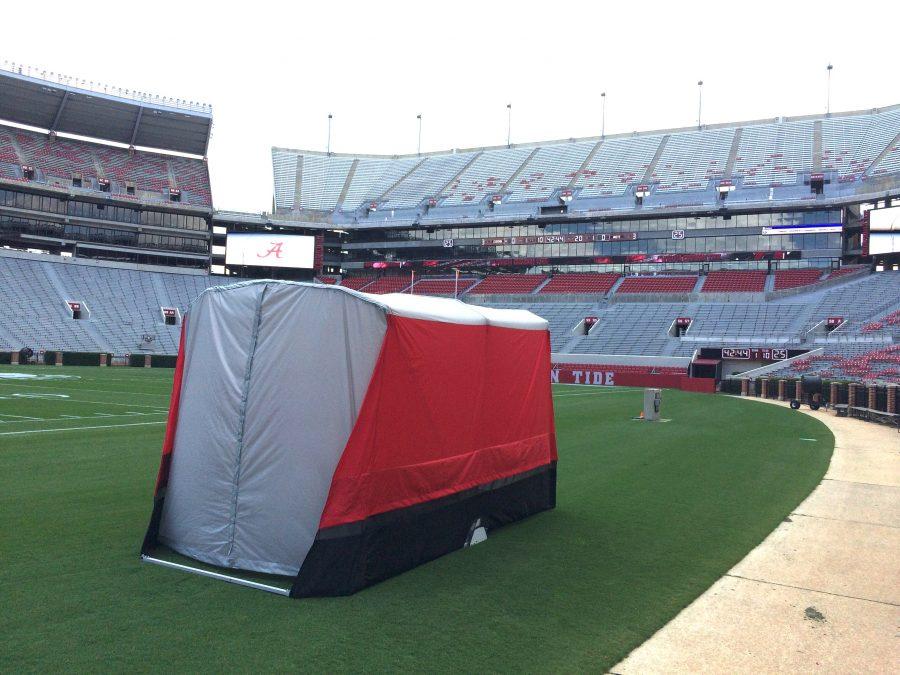A sports technology research center dedicated to improving the performance, training and health of athletes will now be built after it was approved by the UA System Board of Trustees at its meeting on Friday.
The Integrative Center for Athletic and Sport Technology, or I-CAST, is a first-of-its-kind collaborative research center devoted to developing new technologies and applying existing ones for the purpose of reducing injury, accelerating recovery, enhancing athlete performance and optimizing nutrition in both performance and recovery in competitive sports.
“I am very gratified to see this initiative take place, primarily because of the cooperative spirit of several departments across the spectrum of our campus life working together to benefit student-athletes,” said UA director of athletics Bill Battle in a news release. “Not only will this technology and research improve performance and reduce the chances of injury for our student athletes, it will also provide a tremendous example of our ongoing efforts to give our student athletes the best care possible during their time here.”
Among the more well known examples of I-CAST’s innovations is SidelinER. The patent-pending sideline medical tent was a project between UA Athletics and The College of Engineering used by Crimson Tide athletic training and medical staff during the 2015 football season. According to the news release, the SidelinER has inspired a spin-off company in under a year after its development.
True to the center’s collaborative nature, leadership and participants for I-CAST will come from various aspects of the campus community. Among the academic divisions represented are intercollegiate athletics sports medicine, kinesiology and exercise science, human nutrition, adapted athletics, health science and athletic training program, electrical, computer, and civil engineering and construction and environmental engineering.
“The center provides a unifying theme to bring together multiple colleges and departments to address the technical issues facing competitive athletics,” said Dr. Tim Haskew, I-CAST director and head of the department of electrical and computer engineering. “I-CAST will provide a unique forum for those with the needs, those with the technology and those with the ability to market and distribute the solutions to come together and solve real problems.”
Utilizing 3-D printing technology in the “cube lab” for gloves has been one of I-CAST’s latest projects, Haskew said. Medical braces and splints have also been developed this way by the research center.
Other collaborative endeavors undertaken by I-CAST include: developing electronic sensors and computer programs to track health markers, developing virtual reality environments to improve reflex response, incorporating rehabilitation devices into clothing and innovative programs for injury prevention.
I-CAST works efficiently because projects involve at least two people, with one working from an athletic perspective and the other(s) working from a technological perspective, Haskew said.
Competitive athletics are the central theme of I-CAST, but other industries could potentially benefit from the “trickle down effects” of the technology developed, Haskew said. Examples given include workforce safety and broader applications in healthcare.
It will take roughly three years before the center can operate at full capacity. Funding for I-CAST’s projects will likely come from grants, contracts, industrial sponsors and revenue from licensing intellectual property generated by the center, according to a UA news release.









